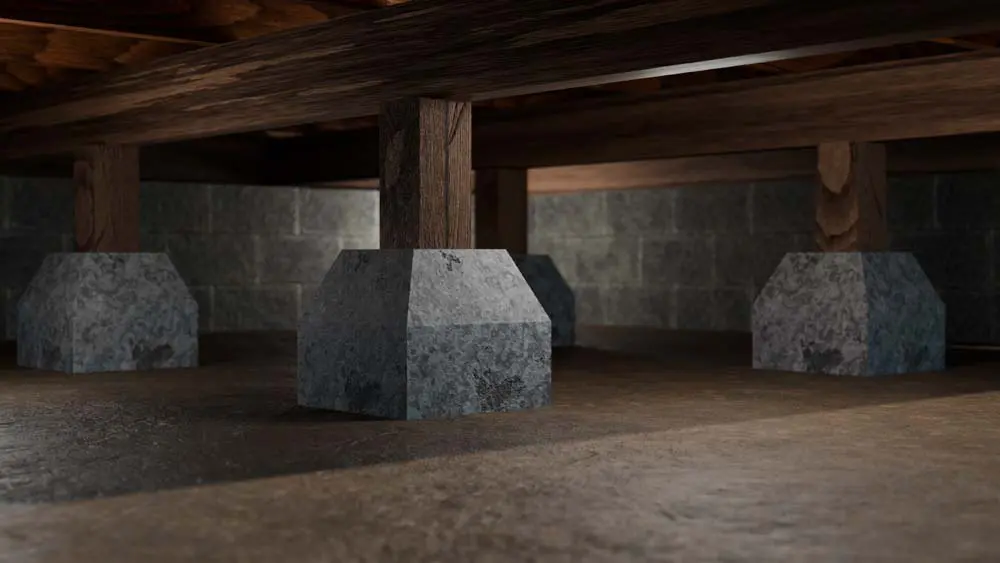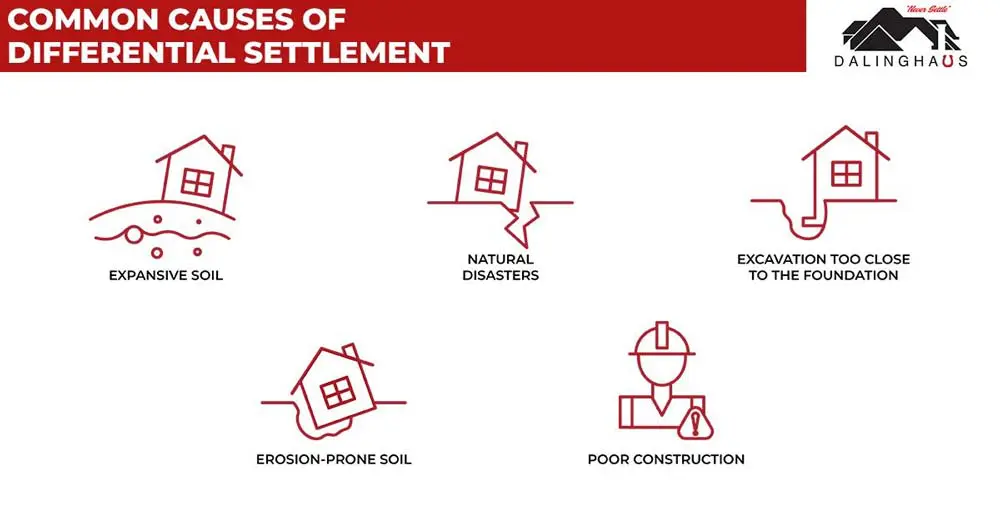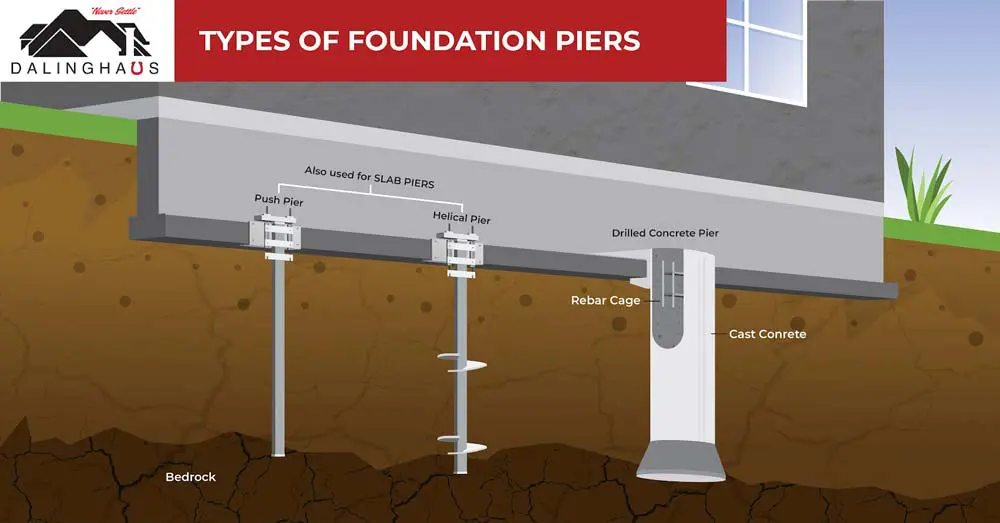While pier and beam foundations have been around for decades and are very popular, over time they may shift or settle unevenly due to various factors such as soil movement or inadequate support. This can lead to sagging floors, cracked walls, and other issues that affect the structural integrity of your home. In this blog post, we will discuss why pier and beam foundations become unlevel, repair options, and more.
What is a Pier and Beam Foundation?
A pier and beam foundation is similar to a crawl space foundation and consists of a few main elements. First, pier and beam foundations have concrete footings embedded in the ground to provide support. A set of piers, typically made of timber, connect to the footings and rise at least a few feet above the ground’s surface.

One of the main benefits of a pier and beam foundation is that it raises your home above ground level. This allows air to circulate and comes in handy if you live in an area prone to flooding. Since a pier and beam foundation raises your home several feet above the ground, it is unlikely that flood waters will cause issues for your house.
Advantages of Pier and Beam Foundations
If you are new to the concept of pier and beam foundations, it is worth learning about some of these foundations’ main benefits. The list below will point out a few of the most compelling reasons why these foundations are popular:
- Easy access to repairs: Since pier and beam foundations raise homes off the ground, they create a crawl space area where routine maintenance is easy.
- Plenty of space for utilities: The crawl space that a pier and beam foundation creates also provides plenty of space for plumbing fixtures, electrical, and other essential utility lines.
- Flood prevention: As noted in the previous section, pier and beam foundations are perfect for regions that experience flooding. By raising your home off the ground, pier and beam foundations protect your house from water damage.
Although pier and beam foundations have several benefits, they can experience problems as well. One of those potential problems is unlevelness and is the topic of the next section.
Why Do Pier and Beam Foundations Become Unlevel?
To understand why foundations become unlevel, you must know how foundation settlement works. Since a home’s foundation rests on soil and depends on it for support, it will move anytime the soil below the foundation shifts or sinks.
A minimal amount of uniform settlement is expected for newly built homes. However, a different form of settlement, differential foundation settlement, is problematic. Differential foundation settlement involves uneven shifts that can result in severe structural damage that manifests in several ways, including stuck doors, jammed windows, foundation cracks, unlevel floors, and more.

When left unaddressed, differential settlement can negatively impact your home’s structural integrity. Since that is the case, it is crucial to seek the help of a professional foundation repair team as soon as possible.
Best Pier and Beam Foundation Leveling Method
The best way to level a foundation experiencing differential settlement is via a process known as underpinning. Underpinning involves installing foundation piers that add stability to your home. Typically, a foundation repair team will use push or helical foundation piers.
Foundation professionals install push piers using a hydraulic pump to press them into the earth. They will continue inserting each pier until it reaches bedrock or a stable strata.
The top of the piers attach to the foundation via a strong bracket. Once the connection between your foundation, the piers, and the firm strata is in place, your foundation team can use the piers to raise your home as much as possible without causing damage. These piers will also stabilize your foundation, making it unlikely to sink again.
The second type of foundation pier is a helical pier. These piers work similarly to push piers but have a different installation method. Helical piers are essentially like giant screws that twist into the ground. The twisting motion embeds the piers and provides enough strength to level the foundation as much as possible and stabilize it.

Get Help Leveling Your Pier and Beam Foundation
After reading this article, it should be clear to you that leveling a pier and beam foundation is not something that you can do on your own. Instead, hiring a professional foundation repair team to perform this challenging process is always best.
If you live in Southern California, Nevada, or Arizona, Dalinghaus Construction is the best team you can choose for any foundation-related issues you may be facing. At Dalinghaus Construction, we have extensive experience providing foundation repair, concrete leveling, seawall repair, and much more. We also specialize in the installation of push and helical piers.
If you want to learn more about our expertise and services, we invite you to visit our website. You should also know that we offer free evaluations. Reach out today to learn more.






